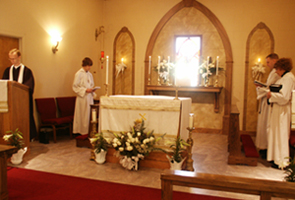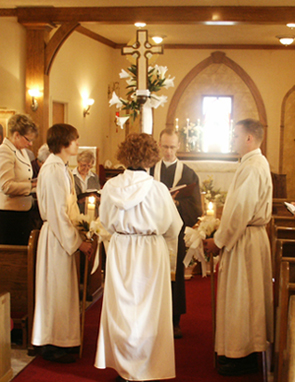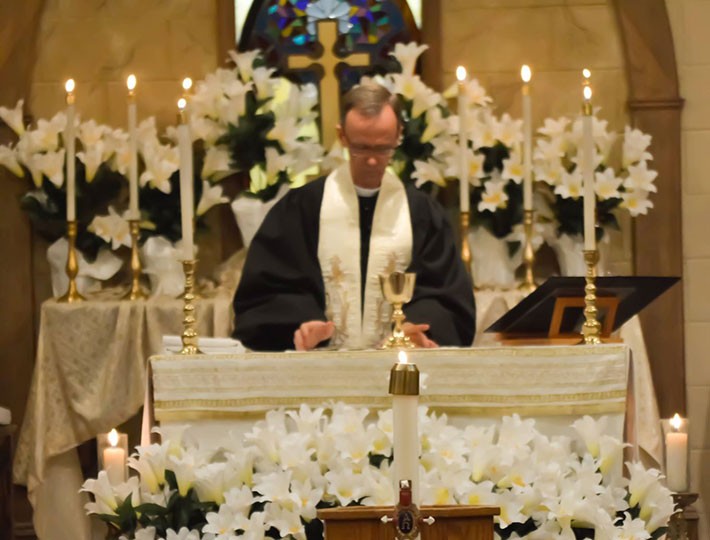Good Friday: The Triduum Continues
On Good Friday evening, worshipers return to a bare and undecorated church for the continuation of the triduum. This historic commemoration of the Passion of Christ consists of these component parts:
The Service of the Word (the Old Testament foretelling of the Crucifixion of the Holy One, a lamentation Psalm, and a New Testament account of the Crucifixion, from an Epistle and one of the Gospels, are read aloud);
The sermon;
The Solemn Collects or Intercessions (We, with other Christians around the world, commemorate the passion and death of the Lord as an act of intercession on behalf of the world by offering our own intercessions in union with those of the high priest, Jesus, who “always lives to make intercession for them” (Hebrews 7:25, RSV).); and
The Tolling: the organ announces, in one repeating solemn tone, each of the years of the earthly life of our Lord.
Holy Communion is not received; Good Friday is traditionally the only day of the year on which Holy Communion may not be celebrated.
Again, there is no final blessing, and the people depart in silence: the service is not yet over. There is more to come.



